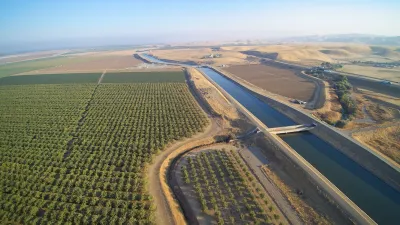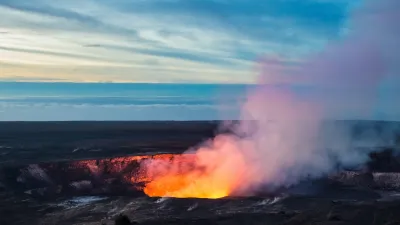Charles C. Mann reports on the benefits and obstacles to cleaner coal and why we need to explore carbon capture and storage even as we transition to renewable energy.
While renewable energy use has increased in the United States, Charles C. Mann reports that China, the largest emitter of carbon dioxide, will continue to depend on coal. As such, China is investing more on reducing the environmental impacts of coal by pioneering carbon capture and storage (CCS) at a larger scale than experimented elsewhere.
Mann reports: “China is launching CCS schemes...faster than any other nation, and the country is unique in its determination to address the emissions from coal-fired plants” versus similar U.S. facilities that “mainly take in CO2 from natural-gas wells and refineries—a worthwhile task but of only secondary importance.”
Opponents of CCS are concerned with three main constraints:
- Inheritant costs: “CCS will eat up 20 to 30 percent of a power plant’s output. Given that typical coal plants can translate only 50 percent of the energy in coal into electricity, deploying CCS means that power plants will consume 40 to 60 percent more of the black stuff.”
- Untested coal-stripping methods in the CCS process, and
- Concern regarding secure storage: “In practice, [carbon dioxide] needs to be stored only for a century or so, the time required for the carbon dioxide to combine with the surrounding stone and form stable minerals. Still, nobody is yet sure how to safely contain CO2 for even that long.”
Yet, Mann reports that CCS remains an optimistic method in securing our energy use until our ability to store and depend on renewable energy improves: “Energy experts believe that it will be at least a century before modern societies can truly convert to renewable energy. Until then, they argue, carbon capture and storage is the only way to deal with the 10.4 billion tons of carbon dioxide that the world’s coal-fired power plants throw off annually.”
Innovations such as CCS are pertinent: “More than a century’s worth of coal remains beneath the surface—an amount so large, two University of Victoria climate scientists calculated in 2012, that burning it all would raise Earth’s average temperature as much as 44 degrees Fahrenheit. In fact, this estimate comes with an asterisk, because after temperatures hit a certain point, current climate models break down, making the future almost impossible to predict.”
FULL STORY: Renewables Aren’t Enough. Clean Coal Is the Future

Study: Maui’s Plan to Convert Vacation Rentals to Long-Term Housing Could Cause Nearly $1 Billion Economic Loss
The plan would reduce visitor accommodation by 25,% resulting in 1,900 jobs lost.

North Texas Transit Leaders Tout Benefits of TOD for Growing Region
At a summit focused on transit-oriented development, policymakers discussed how North Texas’ expanded light rail system can serve as a tool for economic growth.

Why Should We Subsidize Public Transportation?
Many public transit agencies face financial stress due to rising costs, declining fare revenue, and declining subsidies. Transit advocates must provide a strong business case for increasing public transit funding.

How to Make US Trains Faster
Changes to boarding platforms and a switch to electric trains could improve U.S. passenger rail service without the added cost of high-speed rail.

Columbia’s Revitalized ‘Loop’ Is a Hub for Local Entrepreneurs
A focus on small businesses is helping a commercial corridor in Columbia, Missouri thrive.

Invasive Insect Threatens Minnesota’s Ash Forests
The Emerald Ash Borer is a rapidly spreading invasive pest threatening Minnesota’s ash trees, and homeowners are encouraged to plant diverse replacement species, avoid moving ash firewood, and monitor for signs of infestation.
Urban Design for Planners 1: Software Tools
This six-course series explores essential urban design concepts using open source software and equips planners with the tools they need to participate fully in the urban design process.
Planning for Universal Design
Learn the tools for implementing Universal Design in planning regulations.
City of Santa Clarita
Ascent Environmental
Institute for Housing and Urban Development Studies (IHS)
City of Grandview
Harvard GSD Executive Education
Toledo-Lucas County Plan Commissions
Salt Lake City
NYU Wagner Graduate School of Public Service





























